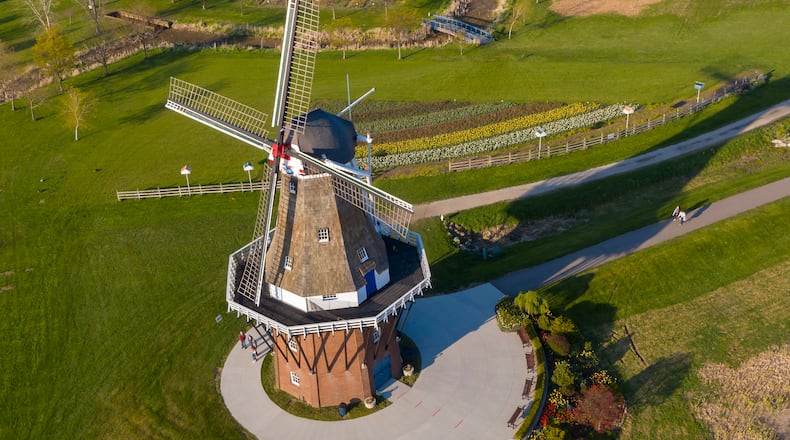The country, though, had recently banned the export of windmills. After three years of negotiations, a suitable mill for export was found in the village of Vinkel in the North Brabant province.
Built in 1884 with pieces from at least two other windmills, De Zwaan, which means “the swan” in Dutch, is 125 feet tall from the ground to the tip of the blades. The grain mill was in disrepair and badly damaged from World War II.
A millwright from the Netherlands, Jan “Diek” Medendorp, was put in charge of the move and repairs.
“He took the mill apart in the Netherlands, arranged it and wrote part numbers on it and came over with the mill, and he actually was the one who installed it here in Holland, Michigan,” said Matt Helmus, development manager at the Windmill Island Gardens.
Credit: TNS
Credit: TNS
A new brick base was constructed and canals were built in a new park created by the city. Opened to the public in 1965, the park features a replica of a 14th-century wayside inn, a street organ that was a gift from Amsterdam to the city of Holland, and thousands of tulips that anchor an annual festival in the city.
De Zwaan figures into World War II.
“The Dutch resistance actually used it as a lookout and a hiding point,” said Helmus. “Occasionally Nazi planes would strike it with bullet fire. The blades that came over have since been removed because they have bullet holes in them.”
Those old blades are on display next to the windmill for the public to see the holes.
An original blade from the De Zwaan windmill at Windmill Island Gardens park, in Holland. The windmill was originally built in the Netherlands in 1884 and during World War II was used as a lookout and hiding place by the Dutch resistance. Bullet holes made by Nazi airplanes that attacked the windmill can still be seen today when visiting the park.
The windmill has also left its mark in other ways.
“We had a gentleman who was living in Indiana but was a Dutchman by birth,” said Helmus. “He actually hid in this mill when it was in the Netherlands during World War II. He hid from German soldiers who were trying to capture him. He came and visited the mill decades later when it was in America. It was obviously very emotional to him because in a way this mill saved his life.
“It’s not just a piece of equipment, it’s not just a piece of history, it has connections to a lot of people’s lives.”
De Zwaan was built as a grain windmill and still operates as one. Wheat is purchased from a local farm and is brought up to the fifth floor using wind power. It is also ground by the millstones using wind power. Normally you can buy the flour at the park, but repairs to the windmill have paused milling operations.
It is the only authentic working Dutch windmill in the United States.
“It’s an old mill that’s been through a lot,” said Helmus.
Windmill Island Gardens is open seven days a week from April through October. Visitors can take a self-guided tour of the windmill that includes access to the fourth-floor balcony.
About the Author

